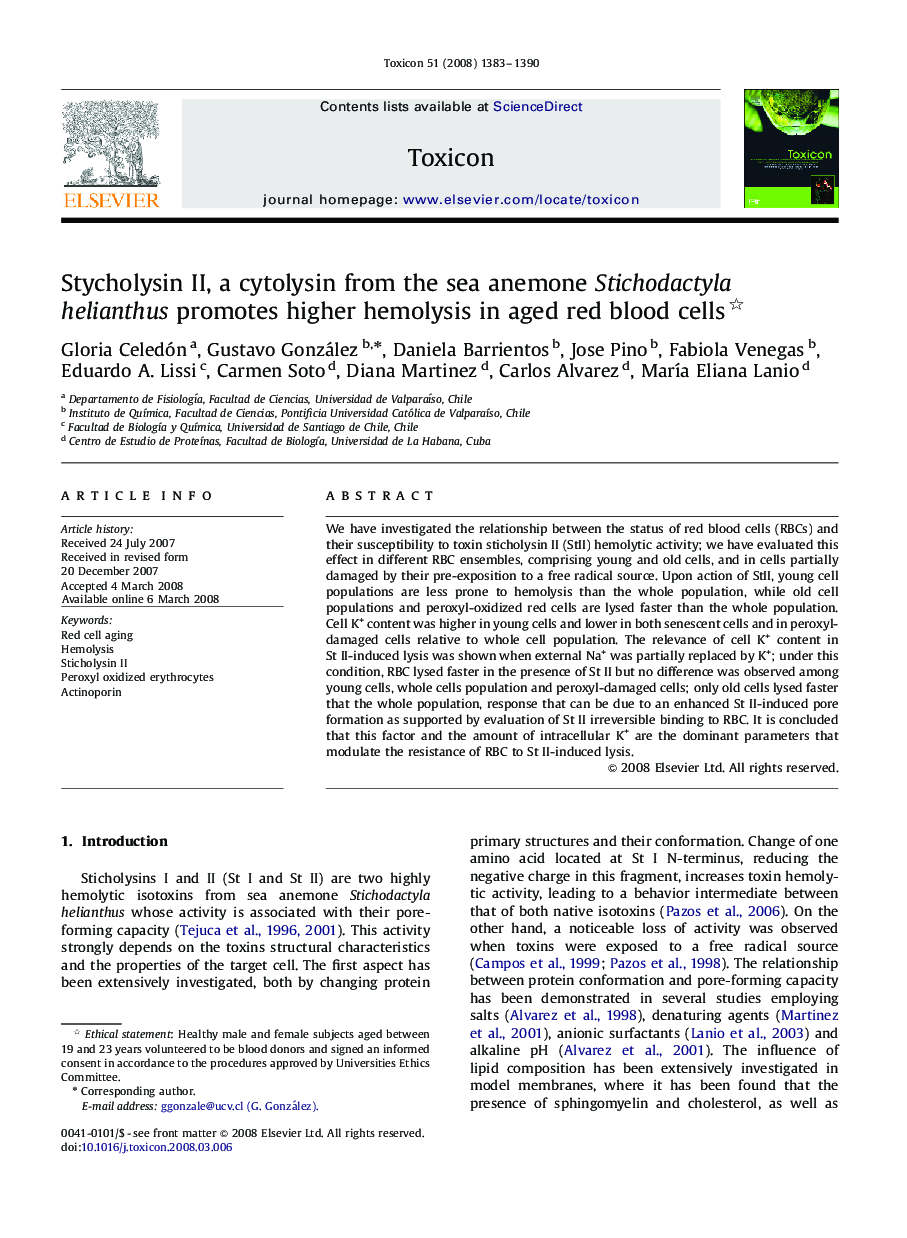| Article ID | Journal | Published Year | Pages | File Type |
|---|---|---|---|---|
| 2066623 | Toxicon | 2008 | 8 Pages |
We have investigated the relationship between the status of red blood cells (RBCs) and their susceptibility to toxin sticholysin II (StII) hemolytic activity; we have evaluated this effect in different RBC ensembles, comprising young and old cells, and in cells partially damaged by their pre-exposition to a free radical source. Upon action of StII, young cell populations are less prone to hemolysis than the whole population, while old cell populations and peroxyl-oxidized red cells are lysed faster than the whole population. Cell K+ content was higher in young cells and lower in both senescent cells and in peroxyl-damaged cells relative to whole cell population. The relevance of cell K+ content in St II-induced lysis was shown when external Na+ was partially replaced by K+; under this condition, RBC lysed faster in the presence of St II but no difference was observed among young cells, whole cells population and peroxyl-damaged cells; only old cells lysed faster that the whole population, response that can be due to an enhanced St II-induced pore formation as supported by evaluation of St II irreversible binding to RBC. It is concluded that this factor and the amount of intracellular K+ are the dominant parameters that modulate the resistance of RBC to St II-induced lysis.
